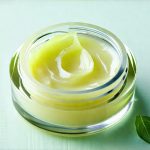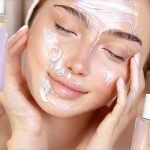The connection between skincare and bladder health might seem incredibly distant – even bizarre – but for a growing number of people, it’s a very real concern. Many individuals experience increased urinary frequency, urgency, or even incontinence triggered by seemingly innocuous products like face washes, moisturizers, and body lotions. This isn’t necessarily an allergy in the traditional sense; rather, it often stems from irritation caused by ingredients that can travel through the skin and impact the delicate bladder lining. Understanding this connection is crucial for anyone experiencing unexplained bladder issues, as it could offer a surprisingly simple solution to a frustrating problem.
The key lies in the permeability of our skin – it’s not merely a barrier but a dynamic organ capable of absorbing substances. While many ingredients are too large to pass through effectively, smaller molecules from skincare products can enter the bloodstream and eventually reach the bladder. Once there, certain chemicals can directly irritate the bladder lining, causing inflammation and triggering those familiar, uncomfortable symptoms. This is particularly true for individuals with pre-existing conditions like Interstitial Cystitis (IC) or overactive bladder (OAB), where the bladder is already hypersensitive. Recognizing this potential link allows us to move beyond traditional explanations for urinary issues and explore a different avenue of investigation and relief. If you are concerned about how often you need to empty your bladder, consider reading how often should you.
The Culprits in Your Cabinet
Many common skincare ingredients are known irritants for sensitive bladders. Fragrances, both synthetic and natural, are among the biggest offenders. They’re complex mixtures of chemicals that can easily penetrate the skin and trigger inflammatory responses. Similarly, harsh sulfates like Sodium Lauryl Sulfate (SLS) and Sodium Laureth Sulfate (SLES), frequently found in cleansers and shampoos, can disrupt the skin’s barrier function and increase its permeability to other irritants. Preservatives like parabens and formaldehyde-releasing preservatives aren’t always direct bladder irritants themselves but can contribute to overall inflammation and sensitivity.
Beyond these common suspects, ingredients like alcohol (especially denatured alcohol), propylene glycol, and certain essential oils should also be scrutinized. Even seemingly benign components like citric acid – often used for pH balancing – can exacerbate bladder symptoms in some individuals. It’s important to remember that everyone’s sensitivity levels are different; what irritates one person may not bother another. The challenge lies in identifying your personal triggers and adjusting your skincare routine accordingly. A slow process of elimination, combined with careful observation of symptom patterns, is often necessary. Is multitasking increasing your pelvic tension? Learn more here.
Decoding Ingredient Lists & Building a Bladder-Friendly Routine
Navigating ingredient lists can feel overwhelming, but there are strategies to simplify the process. First, prioritize products labeled “fragrance-free” rather than “unscented.” Unscented simply means masking fragrance with other chemicals; fragrance-free indicates no fragrance at all. Look for gentle cleansers that avoid sulfates and opt for moisturizing ingredients like ceramides, hyaluronic acid, and shea butter – these help support the skin barrier without causing irritation. When in doubt, less is more: a minimalist skincare routine focusing on essential hydration and protection will generally be kinder to your bladder.
Building a bladder-friendly routine isn’t about eliminating all potentially irritating ingredients but about being mindful of what you’re applying to your skin. Consider patch testing new products on a small area of skin before widespread use, and pay attention to any changes in your urinary symptoms. If you suspect a particular product is contributing to bladder issues, discontinue its use immediately and observe if there’s improvement. Keeping a skincare diary can also be incredibly helpful – documenting what you apply each day and noting any associated symptom fluctuations will help pinpoint potential triggers more effectively.
Identifying Your Personal Triggers
The first step in addressing skincare-related bladder irritation is identifying your individual sensitivities. This isn’t always straightforward, as multiple ingredients could contribute to the problem. A meticulous approach – often involving a process of elimination and reintroduction – is key. Start by simplifying your skincare routine dramatically: switch to hypoallergenic, fragrance-free cleansers and moisturizers with minimal ingredient lists. Observe if symptoms improve.
Then, slowly introduce new products one at a time, allowing several days or weeks between each addition to assess any potential impact on your bladder. Keep a detailed log of everything you apply to your skin and any associated changes in urinary frequency, urgency, or pain. Consider consulting with a dermatologist or healthcare professional who understands the connection between skincare and bladder health; they can offer personalized guidance and help rule out other underlying causes. If you’re unsure how to tell if your bladder is fully emptying, seek medical advice.
The Role of Skin Barrier Function
A healthy skin barrier is critical for preventing irritants from entering the body. When the barrier is compromised – due to harsh cleansers, over-exfoliation, or environmental factors – it becomes more permeable, increasing the risk of bladder irritation. Focus on strengthening your skin barrier by incorporating gentle cleansing practices and using products containing ingredients that support barrier repair.
Ceramides, fatty acids, and cholesterol are essential components of a healthy skin barrier. Look for moisturizers containing these lipids to help restore and maintain its integrity. Avoid over-exfoliating or using harsh scrubs, as these can further disrupt the barrier function. Hydration is also crucial – both internal (drinking plenty of water) and external (applying moisturizing products). A strong, intact skin barrier acts as a natural defense against potential bladder irritants.
Beyond Skincare: Holistic Considerations
While skincare is often a significant contributor to bladder irritation, it’s rarely the sole factor. Other lifestyle elements can play a role, exacerbating or mitigating symptoms. Diet significantly impacts bladder health; acidic foods and beverages (citrus fruits, tomatoes, coffee, alcohol) are well-known irritants for many people with sensitive bladders. Stress and anxiety can also worsen urinary symptoms, highlighting the importance of stress management techniques like yoga, meditation, or deep breathing exercises.
Finally, underlying medical conditions – such as Interstitial Cystitis (IC) or overactive bladder (OAB) – need to be addressed by a healthcare professional. Skincare adjustments can provide symptomatic relief but aren’t a substitute for appropriate medical treatment. A holistic approach that considers all contributing factors is essential for achieving long-term bladder health and well-being.





















